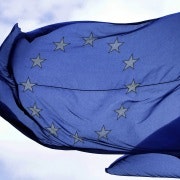A Fed fallout shelter for Europe
The US Federal Reserve’s massive experiment with economic stimulus will be wound down. Get used to it. Less certain is whether central bankers in
By its actions, the Fed arguably averted a global depression and, indisputably, fed global equity and bond market rallies.
When and by how much the Fed decides at its policy meeting today to scale back its asset purchase programme, or who succeeds
The bigger picture is that as the US economy recovers, “quantitative easing” and historically low US interest rates will be phased out. As all market veterans know, when the central bank started a tightening cycle in 1994, bond markets crashed globally. So should
Yes, if one takes at face value comments last week by Jorg Asmussen, a
The turmoil developing economies have seen so far on talk of “tapering” Fed QE suggests
However, European markets have remained stable so far – remarkably perhaps in the southern eurozone “periphery” – although
ECB research, yet to be published, has looked in depth at what exactly happened in 1994. One observation is that eight out of the 10 largest daily increases in 10-year US Treasury yields that year were on better than expected economic data. In other words, markets worried that central banks would react to positive news by tightening faster than warranted.
The lesson Asmussen drew in his
Were monetary conditions to threaten the eurozone’s fragile recovery, the ECB could cut interest rates further or launch fresh offers of liquidity to eurozone banks – perhaps over an even longer period than the three-year loans announced in late 2011, or on better terms, or conditional on banks lending more to the real economy.
Another part of the ECB’s plan to strengthen its communication is the future publication of the minutes of policy meetings. Historically, the ECB has kept secret the position of individual council members, most of whom are national central bank governors in eurozone states. The fear was of undue domestic political pressures to vote in particular ways. Ironically, the word in
But even if ECB minutes are published, it all may not be enough to prevent financial turmoil and premature rises in European market interest rates.
Influencing a lot of thinking these days in European policy circles is a paper on global capital linkages presented at August’s summit of central bankers in
Rey identified how the Fed drove a common global financial cycle influenced by investors’ risk appetites that often rendered impotent actions by other national authorities. Her paper has helped crystallise how global investors should think about emerging market economics – and may have been in Asmussen’s mind when he spoke last week. Not a few policy makers in
Copyright The Financial Times Limited 2013.















